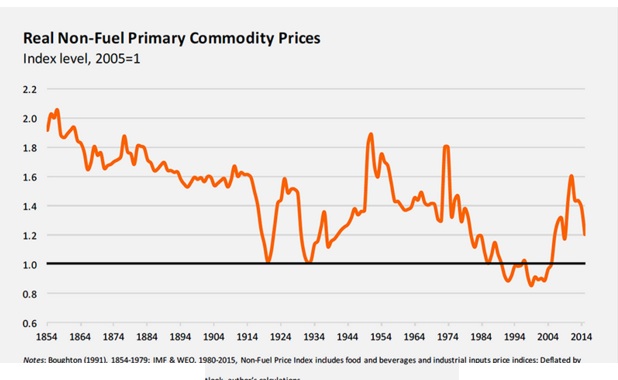Carmen Reinhart writes: The global commodity super-cycle is hardly a new phenomenon. Though the details vary, primary commodity exporters tend to act out the same story, and economic outcomes tend to follow recognizable patterns. But the element of predictability in the path of the commodity-price cycle, like that in the course of a roller coaster, does not make its twists and turns any easier to stomach.
Since the late eighteenth century, there have been seven or eight booms in non-oil commodity prices, relative to the price of manufactured goods. (The exact number depends on how peaks and troughs are defined.) The booms typically lasted 7-8 years, though the one that began in 1933 spanned almost two decades. That exception was sustained first by World War II and then by the post-war reconstruction of Europe and Japan, as well as rapid economic growth in the United States. The most recent boom, which began in 2004 and ended in 2011, better fits the norm.
Commodity-price busts – with peak-to-trough declines of more than 30% – have a similar duration, lasting about seven years, on average. The current bust is now in its fourth year, with non-oil commodity prices (relative to the export prices of manufactures) having so far fallen about 25%. Commodity Booms and Troughs

